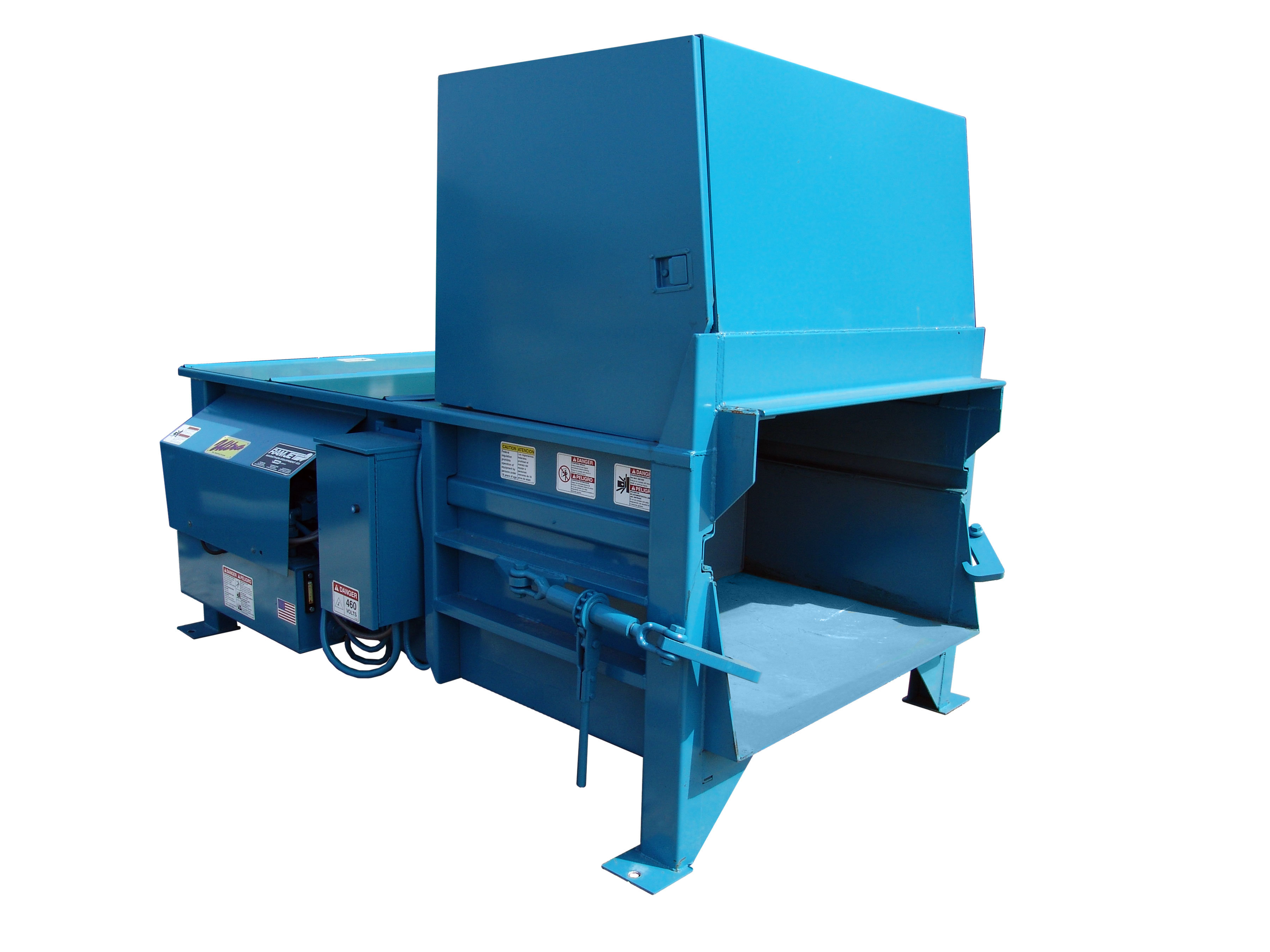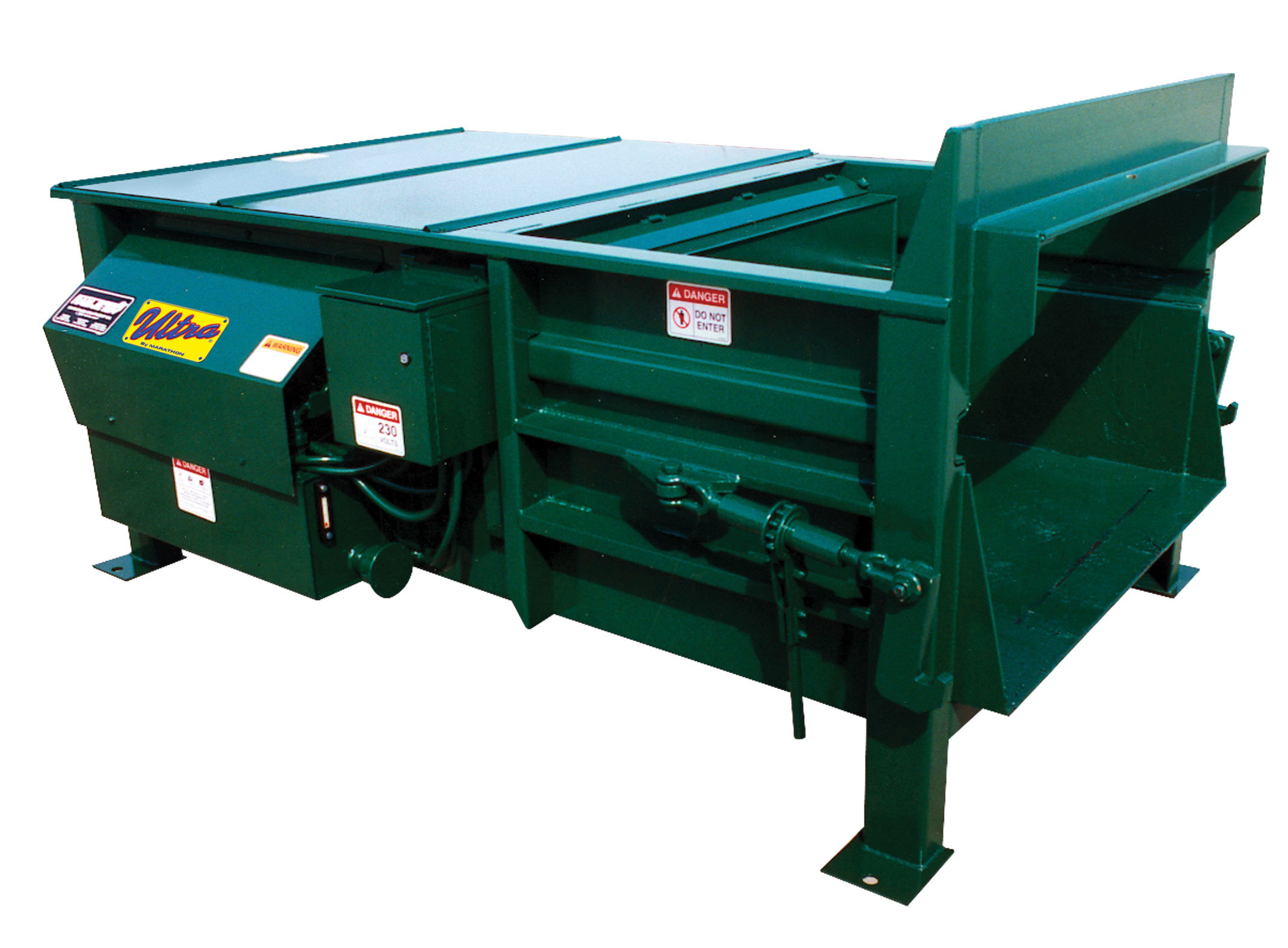Commercial garbage compaction equipment and its value in waste control
Wiki Article
Understanding the Various Usages of Waste Tools in the Recycling Market
The recycling industry relies heavily on specialized waste tools to maximize handling and recovery. Each tool, from shredders to balers, serves a distinct function that enhances total effectiveness. Understanding these duties is crucial for enhancing sustainability initiatives. Commercial garbage compaction equipment. As technology breakthroughs, new technologies arise, promising to change typical practices. This development elevates crucial questions concerning the future of waste management and its effect on ecological conservation. What changes lie ahead for this crucial industry?The Function of Shredders in Product Handling
Shredders play a critical role in the reusing sector by efficiently processing various kinds of waste materials. These makers are designed to lower big items, such as plastics, metals, and natural waste, right into smaller sized, convenient items. This dimension reduction is necessary for succeeding recycling procedures, as it enables easier handling and sorting. In addition to assisting in recycling, shredders enhance security by lessening the risk of injury related to managing bulky waste products.Moreover, shredders contribute to ecological sustainability by guaranteeing that products are processed in such a way that maximizes source recovery. They can manage a diverse variety of materials, making them flexible devices in waste management facilities. The reliable procedure of shredders not just improves the recycling process yet additionally boosts the general efficiency of waste diversion initiatives, promoting a round economic situation. Their relevance in product processing can not be overemphasized, as they function as a foundational action towards sustainable waste monitoring techniques.

Just How Balers Enhance Performance in Waste Administration
Balers considerably enhance efficiency in waste monitoring by compacting various materials into bales, which simplifies storage and transportation. By compressing recyclables such as cardboard, plastics, and metals, balers substantially lower the quantity of waste. This compression not just optimizes room in reusing centers but also reduces the number of trips required to transfer materials, causing lower gas expenses and lowered environmental influence.Balers contribute to boosted safety in waste administration operations. Small bundles are simpler to pile and handle, lowering the risk of accidents linked with loose materials. The uniform size of bundles permits extra reliable packing and dumping processes, improving procedures within recycling facilities. In addition, balers can boost the total top quality of recyclables, as properly compacted materials are less most likely to be infected. Generally, balers play an important role in optimizing waste management methods, promoting sustainability in the reusing sector.
Conveyor Systems: Improving the Recycling Process
Incorporating sophisticated equipment like balers significantly improves waste administration procedures, yet the efficiency of the reusing procedure is better enhanced via using conveyor systems. These systems play Commercial waste compactor equipment an essential role in the smooth transport of products within recycling centers. By assisting in the movement of various waste types, conveyor systems minimize manual handling and reduce the risk of contamination throughout the recycling process.Moreover, conveyor systems can be personalized to fit the special formats and functional needs of recycling centers. Their ability to operate continuously permits for a steady circulation of products, boosting efficiency and ensuring that sorting and processing devices gets a regular supply.
Equipped with functions like adjustable speeds and automated controls, conveyor systems can maximize the circulation of materials, considerably improving total efficiency (Commercial garbage compaction equipment). These systems are essential in modern-day recycling procedures, contributing and streamlining processes to efficient waste monitoring.
Arranging Devices: The Key to Material Recuperation
Sorting machines are necessary components in the recycling industry, significantly boosting the performance of material recovery. These makers play a critical duty in the separation of different recyclable products, permitting a streamlined procedure that makes the most of source removal. By using innovative modern technologies, such as optical sensing units and air classifiers, sorting machines can determine and categorize products based on their composition, weight, and dimension. This capacity assures that metals, plastics, and paper products are successfully separated, decreasing contamination and enhancing the top quality of recycled outcome.The procedure of sorting makers considerably reduces the reliance on manual work, which can be both time-consuming and prone to mistakes - Commercial garbage compaction equipment. In addition, the automation provided by these machines accelerates the overall recycling procedure, leading to higher throughput and enhanced operational efficiency. Arranging machines are vital in accomplishing sustainable waste monitoring objectives, making it possible for the reusing market to efficiently recuperate useful materials while reducing landfill reliance.
Advancements in Waste Tools for a Sustainable Future
Current advancements in waste tools are driving the recycling market towards a much more lasting future. Technologies such as automated arranging systems, which utilize expert system and maker knowing, boost efficiency by accurately recognizing and separating recyclables. This leads to greater recovery rates and minimized contamination. Additionally, advancements in compacting technology enable much more effective transport of products, minimizing carbon footprints during transportation.Advancements in shredding equipment enhance the processing of complicated products, allowing the recycling of items that were when deemed non-recyclable. The integration of renewable resource resources, like solar power, in waste handling centers additionally adds to sustainability goals. Additionally, advancements in waste-to-energy technologies and eco-friendly products are improving the landscape of waste monitoring. Jointly, these improvements symbolize a transformative shift within the recycling sector, advertising not just environmental management but likewise financial viability for future generations.
Often Asked Questions
What Sorts Of Materials Can Waste Tools Take Care Of?
The sorts of materials waste tools can take care of include plastics, steels, paper, glass, and natural waste. Each tools type is designed for specific products, enhancing effectiveness and effectiveness in arranging and refining various waste streams.Exactly How Commonly Should Waste Devices Be Maintained?

Are There Safety Worry About Using Waste Tools?
Safety and security problems with making use of waste tools consist of prospective injuries from mechanical breakdowns, direct exposure to dangerous materials, and poor training. Appropriate maintenance, regular inspections, and worker education and learning are important to minimize these threats successfully in any setting.What Is the Average Lifespan of Recycling Devices?
The average life-span of recycling equipment typically varies from 10 to 20 years, depending on aspects such as usage strength, maintenance methods, and technological innovations, which can significantly affect sturdiness and performance in time.Just How Is Waste Devices Powered in Recycling Facilities?
Waste equipment in recycling facilities is normally powered by electricity, though some machines may use different energy resources like gas or diesel. This power enables reliable handling and change of products for recycling functions.Shredders play a vital duty in the recycling market by successfully refining various types of waste materials. They can take care of a varied variety of products, making them functional tools in waste management centers. Balers greatly boost efficiency in waste administration by condensing various products right into bales, which streamlines storage and transportation. The kinds of products waste equipment can take care of include plastics, metals, paper, glass, and organic waste. Safety issues with making use of waste equipment include possible injuries from mechanical breakdowns, exposure to dangerous materials, and insufficient training.
Report this wiki page